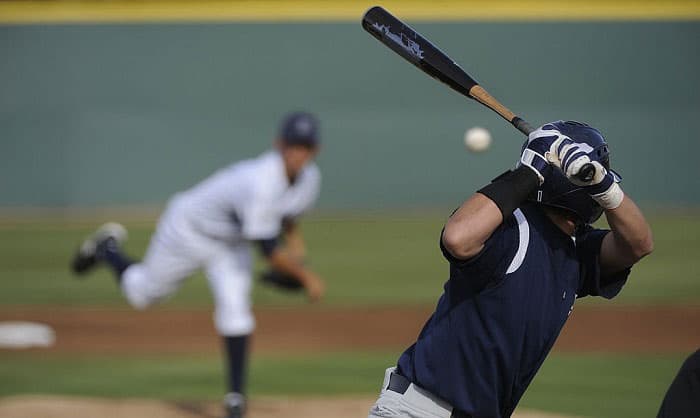The OBP is one of the most important statistical tools used in baseball. Without this tool, measuring the success of a batter or hitter would be a difficult task. Fortunately, with the OBP output, analysts and even audiences can now pick their favorite batters in a team.
But here is the thing: calculating OBPs without prior knowledge is a tough, if not impossible, task to do. Moreover, a layer of other considerations makes such an effort even more complex. For more info on OBP, including what is a good OBP in baseball, keep reading!
Contents
- What Does OBP Stand for in Baseball? What Is a Good
- How Important Is the OBP Statistic?
- Does OBP Apply to All At-Bat Performances?
- Can OBP Stand on Its Own?
- Which Is More Important: Batting Average or OBP?
- How Has the Walk Become a Turning Point for Batting Performance?
- What Is the Major League Average for Getting a Hit?
- What Are Fair and Foul Territories?
- How Did OBP Become Popular?
- Who Created Sabermetrics and What Does It Mean?
- What Happens if a Player Has a High OBP Rate?
- Conclusion
What Does OBP Stand for in Baseball? What Is a Good
OBP stands for “on-base percentage.” A good on base percentage would equal the average on-base rate in baseball. Very good, on the other hand, would conveniently mean above average. Lastly, excellent would mean outstanding.
Going by the above criteria, an average or good on-base percentage in baseball is .300.
OBP is calculated based on the number of times the player is on base and their number of plate appearances, specifically: Times on base ÷ plate appearances.
Presented below is the complete OBP formula:
OBP = hits + walks + hit by pitch
______________________________
at-bats + walks + hit by pitch + sacrifice fly
How Important Is the OBP Statistic?
The advantage OBP has over other stats like the batting average is its inclusion of offensive moves. No other statistical tool can compare to the OBP in giving credit to the hitter based on walks.
What does OBP mean in baseball stats? Well, the answer is simple. Unlike other metrics, it does mark the bases reached and the walks involved in getting on base. In cases where the batter or his equipment takes hits during pitches, the OBP also considers the numbers of hits-by-pitch.
Ultimately, the OBP statistic is the only system that zeroes in on the hitter/batter’s ability of not making outs while also acknowledging a player’s contribution to a scored run.
In simple terms, the OBP baseball stat is important because it proves hits aren’t the only measurement of a batter’s effectiveness.
Does OBP Apply to All At-Bat Performances?
No. It does not. According to the rules set by MLB (major league baseball), the batter can increase his OBP rate except in the given circumstances:
- Sacrifice bunt: The sacrifice bunt is often a conscious decision made by the manager instead of the player. As a result, although the sacrifice bunt grants the batter an opportunity to get on base, it still cannot increase a batter’s OBP rate.
- Uncaught third strike: Even when the catcher fails to catch the ball for the third strike, this still cannot earn the batter an OBP credit. Instead, the batter would get a strikeout.
- Fielder’s choice: When an offensive player reaches base thanks to the defense’s conscious decision to put out a runner, the batter cannot earn an OBP credit. In fact, any action that relates to the fielder or defense’s decisions automatically denies the batter the opportunity to earn an on-base credit.
Can OBP Stand on Its Own?
No. Despite OBP’s extensive capacity to grade batting performances, it still cannot cover how well the batter hits the ball. For example, extra-base hits are not covered in the OBP calculation, but they are a significant indicator of batting performance.
For this reason, OBP is frequently considered together with batting averages or a good slugging percentage.
Which Is More Important: Batting Average or OBP?
OBP turns out to be a more comprehensive means for judging the subtleties of a hitter’s performance. Experts support this claim using the context of the walk.
For example, if two players have the same batting average but different on-base percentages, the hitter with the higher OBP will be more effective as a player. This is because he takes more walks and needs fewer at-bats to reach base.
It would be safe to conclude at this point that the value of a walk, including, of course, the talent needed to pull it off, is not included in the batting average calculation but is given much emphasis in the OBP metric.
How Has the Walk Become a Turning Point for Batting Performance?
It is very rare for a player to hit a ball in fair territory. Ultimately, balls hit here have a 70% chance of being outs. So much work needs to be done to reach a base by a swing in fair territory. Unless the hitter resorts to walking (which guarantees to get him on-base), he is not seeing the light of a base any time soon.
What Is the Major League Average for Getting a Hit?
The average for getting a hit in a major league game is .300 or a bit higher. Good hitters (or those who can secure a good OBP) can peak to a round point of .350 throughout the year.
What Are Fair and Foul Territories?
Fair territory is the space within the first and third base boundaries. These boundaries expand from the home plate and go all the way to the right and left field fences. When the ball is at rest (meaning, not in play), all the fielders (not including the catcher) stay inside the fair territory.
On the other hand, foul territory is the area beyond the first base and third base marks that go towards the fence. This territory includes the dugouts, on-deck circles, and stands.
How Did OBP Become Popular?
OBP has been on the radar since 1871, when the National Association of Professional Baseball Players used some parts of its formula in box scores, but it only became a mainstream statistical tool in 1984. In that year, it became an official MLB statistic.
Many experts believe that the publication of the 2003 nonfiction book Moneyball by author Michael Lewis prompted the OBP to become even more popular.
Who Created Sabermetrics and What Does It Mean?
Bill James, a renowned American baseball historian and statistician, came up with the term “sabermetrics” in 1980.
As formally defined by James, sabermetrics is the pursuit of objective knowledge about baseball. It, therefore, concerns data that help analyze and predict players’ performance and output.
This breakthrough system founded by James forever changed the landscape of statistics in baseball. The radical change came because some statistical results overestimate or underestimate players.
For instance, the RBI (runs batted in) or batting average have recently surfaced as insufficient tools in determining hitter performance quality.
With other integrated statistics like OBP, sabermetrics addressed these shortcomings within baseball’s statistical system. After all, baseball is a game of statistics.
What Happens if a Player Has a High OBP Rate?
If a player has a high OBP, he is likely to be assigned to the front line as he is certain to take the lead and earn a score through the base. These hitters are first assessed by their capacity to earn a base on their own regularly.
Conclusion
The answer to “what is a good OBP in baseball” is .300. Through the years, OBP or on-base percentage has become one of the most important, if not the most important, statistic in sabermetrics.
But OBP certainly cannot stand on its own. In the end, it’s only one part of the sabermetrics necessary for capturing the complex statistical odds in baseball.

A powerful swing and the ball is flying across the field, just one hit, and we might never forget the thrill it brings. I do not know about you, but I never do. Every baseball game is the chance to compete with others and cooperate with your teammate. It is among my biggest passions.
















